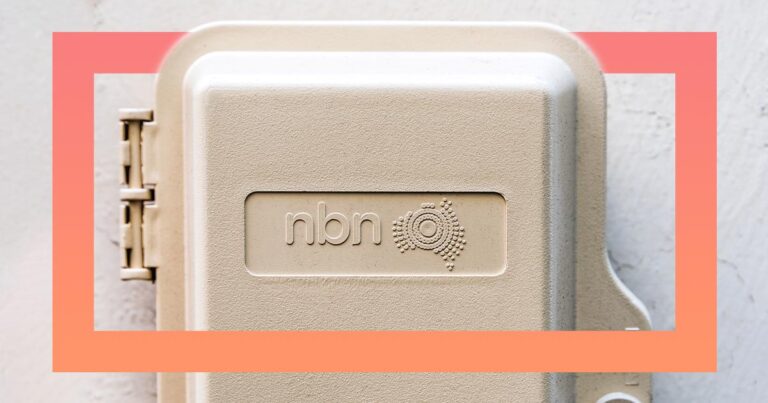There’s a lot of jargon when it comes to the critical NBN hardware that helps get you online. Let’s demystify the main ones that help get you online.
Unboxing the differences between NBN box, NTD, modem and router
There’s a lot of jargon when it comes to getting online with the NBN. There’s so much, in fact, that we’ve got a lengthy page dedicated to explaining all of the key NBN terms. While there are dozens of NBN terms to demystify, we find that there’s confusion around the differences between an NBN box, an NBN modem, an NBN NTD, an NBN router and a modem-router. Let’s flash a light on these NBN devices.

NBN box vs NBN NTD vs NBN modem
Let’s get the easy one out of the way first. The only complexity here is that NTD is short for ‘network termination device’. Outside of that, whether you’re looking for an NBN box (or NBN connection box), NBN NTD or NBN modem, you’re looking for the same device.
These are different terms for the same modem device that’s used to connect homes to the NBN. Because NBN is a specialised network, you need to use an NBN box/NTD/modem provided by NBN Co to get online. This critical networking device is usually sent out to your home when you order a new NBN plan, but it should already be there if you’re moving into a property that’s previously been connected to the NBN.
Here are the technology types that use an NBN Box/NTD/modem:
- Fibre-to-the-Premises (FTTP)
- Hybrid Fibre Coaxial (HFC)
- Fibre-to-the-Curb (FTTC)
- NBN Fixed Wireless
- Sky Muster satellite NBN
The only time you’d need to change the NBN box in your home is if you upgrade the technology from a non-FTTP connection to an FTTP connection. Still, the process is the same: order a plan from an NBN provider and get them to organise the equipment with NBN Co.
NBN router vs NBN modem-router
Technically, there’s no such thing as an NBN router or NBN modem-router. Instead, what you get is an NBN-compatible router or modem-router. NBN-compatible routers are essential for sharing your NBN internet connection beyond a single wired device. These devices use an Ethernet cable to connect to an NBN box/NTD/modem and let you connect devices via wired Ethernet or wireless WiFi.
NBN modem-routers, though, are used for two very specific types of NBN technology: Fibre-to-the-Building (FTTB) and Fibre-to-the-Node (FTTN). These two NBN technologies are reliant on the VDSL2 standard—used to get the best broadband speeds out of copper wiring—which means they need a modem-router to get the internet and share it around the home. Basically, modem-routers are a modem and router rolled into a single device. Modem-routers can also be configured for use as routers.
For all other NBN technologies, any modern router (and most older ones) will work with the NBN box/NTD/modem options listed above. This means you can save money by using a BYO router between providers. The only proviso there is Telstra, Optus and Vodafone tend to push their NBN users towards an included modem-router (compatible with all NBN technologies), which is worth using to streamline the support process.
NBN plans for all technologies
Most homes in metro areas can order NBN 12, NBN 25, NBN 50 and NBN 100 plans. NBN 50 plans are the most popular in Australia, offering a great mix of value and speed. Below is a daily updating list of NBN 50 plans for FTTP, HFC, FTTC, FTTB and FTTN homes.
If you’re in a regional part of Australia, your home may be connected to the NBN via NBN Fixed Wireless technology. Check out a daily updating list of NBN Fixed Wireless plans from our database.
Remote and offshore parts of Australia tend to be connected via Sky Muster satellite NBN. Below is a daily updating list of Sky Muster satellite NBN plans from our comparison engine.
Those in FTTP and HFC homes can sign up for the fastest NBN plans in Australia. Below is a daily updating list of NBN plans above 100Mbps.
Understanding the NBN box lights
Like most networking equipment, an NBN box/NTD/modem uses lights to indicate status. Generally speaking, you want to see either blue or green lights (depending on the specific NBN technology) to indicate no issues with the device or NBN connection outside the home. Red lights are bad. Solid lights are the norm. Blue or green flashing lights tend to be relegated to device start-up or to indicate activity on the LAN port, which is connected to the NBN-compatible router.
The only type of NBN box/NTD/modem that you should hear making noise is the one used for FTTC connections. This type of NBN connection box will have an audible clicking sound on start-up during a reverse-power request to the distribution point unit (DPU) inside the nearest telecom pit. Jargon aside, the main thing to remember is constant clicking from an FTTC connection box may indicate a problem and you should contact your NBN provider.
It's a similar story with router and modem-router lights, even though the brands and models are different. Solid green, blue or white lights tend to indicate business as usual, while flashing lights (outside of LAN activity) and red lights can indicate problems. If your internet is down or not performing as you expect, look at your NBN box/NTD/modem or router lights to see if anything is amiss, then relay this information to your NBN provider to help with troubleshooting. Alternatively, try powering off any networking equipment for at least 60 seconds, then connecting it to power again to see if this fixes internet issues.
Related Articles




